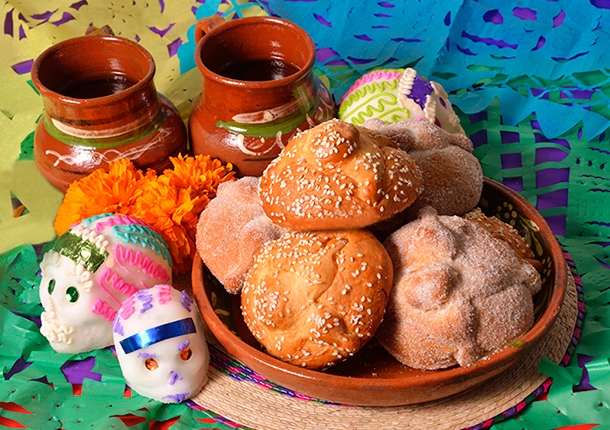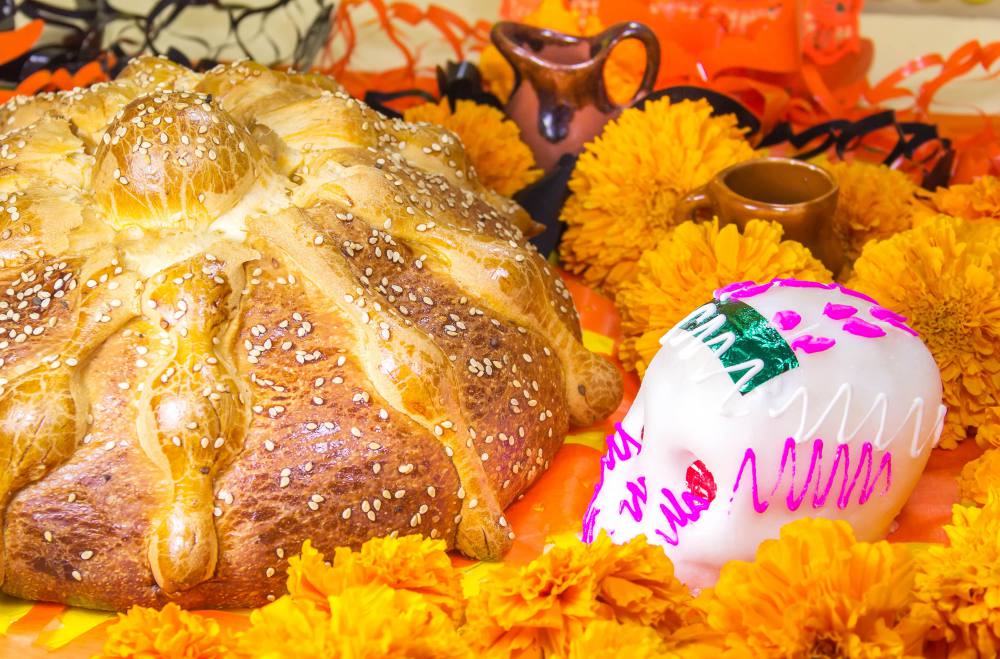As part of its series this week on the Day of the Dead festivities, TYT brings you the origin and meaning of the delicious and traditional “Pan de Muerto”….
On the altar, along with the Pib and the traditional candies, there is always displayed the “Pan de Muerto”, the preferred bread for Mexicans.
The date is approaching, and as every year in Mexico, people are already working to have everything ready for the “Dia de Muertos” festivity, in which food has a huge meaning.
This bread is a true pleasure, and we can find its origin in the time of the Conquest, inspired by pre-Hispanic rituals and modified by Spanish cooking methods, resulting in the deliciousness that today is one of the most important traditions for offerings dedicated to the dead.
There are several versions and theories about the origin of the “Pan de Muerto,” but what all have in common is that its elaboration comes from the time of human sacrifices and the arrival of the Spanish Army to the then New Spain (now Mexico), in 1519.
According the legend there was a sacrifice ritual, in which a princess must be offered to the gods by removing her heart form her chest while she was still alive. Then her still-beating heart was placed in a pot with amaranth seeds, and the priest who led the rite would bite the heart as a sign of gratitude to a god. The Spanish conquerors rejected such sacrifices, and they made a heart-shaped wheat-bread covered in red sugar, to resemble the blood of the lady.
Other historians believe that the birth of this bread is based on a rite to the dead made by the first settlers of Mesoamerica, which buried their dead with their belongings. In the book “De Nuestras Tradiciones” is narrated the elaboration of a bread composed of ground toasted amaranth seeds, mixed with the blood of the sacrifices which were offered in honor of Izcoxauhqui, Cuetzaltzin and Huehuetéotl.
The shape and decorations of this bread also have a meaning: the ball which is at the top of it represents the skull; the side strips resemble the bones and the taste of orange blossom is for the remembrance of the deceased. It also could have other forms like human bodies, all depending on to whom is dedicated the offering; this last shape is more often used when there isn’t an available photo of the deceased.
Everybody knows that the Mexican food is delicious and is always better when you know the history and meaning of what you eat. TYT wish you continued enjoyment of the season’s festivities.
 By Jorge Andrés Barrera Rojas for TYT
By Jorge Andrés Barrera Rojas for TYT
With an International Trade degree from the Autonomous University of Yucatan, Jorge is currently an Editor for The Yucatan Times, Business Adviser and Chinese language and culture student. He also speaks Spanish, English and French.
To check the rest of the “Dia de Muertos” series click on the tag “Dia de Muertos” or on the following links:
- www.theyucatantimes.com/dia-de-muertos-all-saints-day-two-schools-of-thought-blend-into-one-tradition/
- www.theyucatantimes.com/hanal-pixan-the-yucatecan-dia-de-muertos-the-altar-is-the-heart-of-the-festivity/
- www.theyucatantimes.com/the-four-most-haunted-places-in-yucatan/
- www.theyucatantimes.com/dia-de-muertos-a-celebration-of-life/
- www.theyucatantimes.com/la-catrina-mexican-representation-of-death/
- www.theyucatantimes.com/meridas-general-cemetery-the-gate-to-the-other-life/
- www.theyucatantimes.com/the-paseo-de-las-animas-meridas-new-tradition/
- www.theyucatantimes.com/tyt-infographic-dia-de-muertos/







